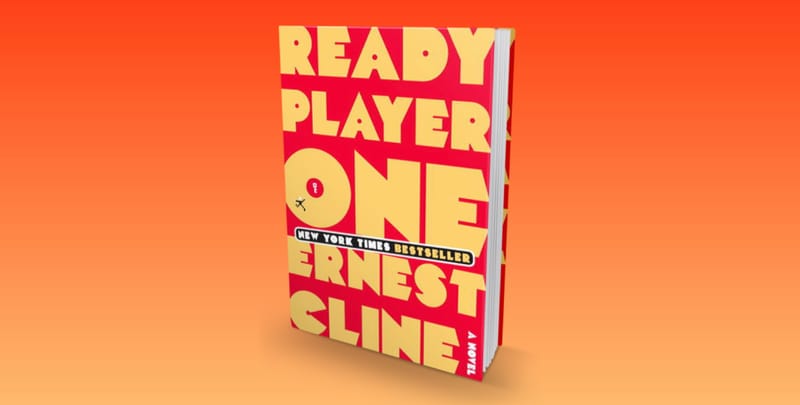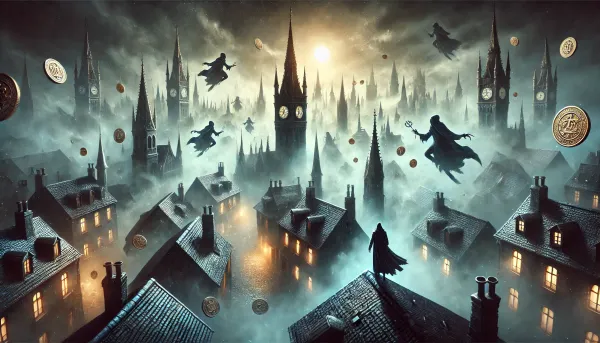Amazon Link: https://amzn.to/4jjxWV7
Title: Ready Player One
Author: Ernest Cline
Genre: Fiction
Publisher: Ballantine Books
Published: June 5, 2012
Pages: 386
Rating: ★★★★★
If there was another star to give, this book would get it. This may just be the best book I've ever read. I don't say that lightly. I've read phenomenal books in my life, but this one is just spectacular. Maybe that's recency bias, but I don't think so. Ready Player One is a book about digital maximalism, a failing world, and remembering that no matter how bad the real world gets, getting lost in non-reality isn't always the best option.
Here's my review. Spoilers ahead.
General Setting
Normally, I don't pay much attention to world building. Well, I do, but if the story is good enough, usually, it fades into the background and just adds flavor to the plot. For example, in Lord of the Rings, the world building is spectacular—maybe the best ever—but for me, it never really mattered as much as the plot. It was immersive in a way that made it not really matter that much.
I don't know whether that makes sense or not.
In Ready Player One, the world building is great, but it also plays such a huge role in the plot it can't be ignored. Set in a world where the energy crisis has led to a general apocalyptic atmosphere, we follow our MC who lives in a stack of mobile homes, living with dozens of people in a cramped space, and just trying to get by as a teenager in a world that has obviously failed in some extraordinary ways.
We are then introduced to the OASIS, a VR simulation that has taken over the world. Most people spend their time in the simulation, so much so that we get the sense that most of the game’s economy has integrated into the real world’s economy. People go to work in OASIS and earn real money, and a lot of what happens in OASIS has real-world impact.
The scale of OASIS is difficult to fathom, but Cline does a fairly good job of making the reader understand that this game is basically infinite and that billions of people use the system for entertainment and as an escape from the failing world.
What I found most interesting is the removal of identity that OASIS provides. In a parallel of our world, who you are online isn’t necessarily who you are in real life. It’s something many people take advantage of, for both good (general anonymity) and bad (trolls) reasons. You never really know who you’re talking to online, and that changes the way you interact with people. The OASIS is that, but on a much larger scale. People create entirely new personas in OASIS, develop habits, form friendships, and fall in love—all without actually ever meeting in real life.
This obfuscation of identity plays a big role in the story and in Wade’s character growth. He’s addicted to OASIS because of how terrible his real life is. As the book progresses, he forms relationships and faces consequences from trusting people he doesn’t truly know.
The Plot
The creator of OASIS, the richest man in the world, has died. If you’ve read Daniel Suarez’s Daemon and Freedom™, this setup may sound familiar. The creator leaves a quest inside OASIS: whoever solves the puzzle will inherit everything. Unlike Suarez’s more grounded, secretive version, Cline’s contest is open to everyone.
This launches a mad race for the Easter Egg. IOI, an evil mega-corporation, is the antagonist. They want to win the contest to control OASIS and monetize it even further. They have unlimited resources and no moral boundaries, even committing real-world crimes to get ahead.
The hunt requires a deep knowledge of 1980s pop culture—games, movies, music. If you grew up in the 90s like I did (I was born in ‘85), this book is a nostalgia trip.
Wade, the protagonist, is great at the game but not perfect, and it’s through his mistakes that he starts to grow. He realizes he needs real connection and that knowledge alone isn’t enough.
The Bad Guys
IOI is an appropriately terrifying villain, especially if you follow how corporate monopolies behave in the real world. The only complaint I had was that Wade never felt like he was in true danger—most things happen inside OASIS, where the worst consequence is being reset. There's one early moment where IOI shows their ruthlessness in real life, but that threat fades.
Still, Cline builds tension well. Around the 75% mark, it feels like IOI is about to win. They gain ground fast, and the dread is real. Wade is at a low point after being rejected by Art3mis, and losing the game would mean losing everything.
This drives him to take a real-world risk—one that sets up the final act and gives the ending weight.
The Characters
Wade starts off as a lonely, nerdy teen with one online friend. Over time, the cast expands, but Cline keeps it tight. You get to know the core characters just enough to care, and when something bad happens to one of them, it hits.
Art3mis is the standout. Wade falls in love with her without having ever met her. The relationship is more told than shown, but it still manages to work. When she rejects him, you feel it—and that’s what matters most in a romance subplot.
Conclusion
I adore this book beyond all measure. I had a blast reading it. It was phenomenally well written and incredibly easy to read. It hooked me from page one, and I didn’t want to put it down. Very few books do that to me.
I’ve heard mixed things about the second book, but I’ll probably check it out anyway. Ready Player One is outstanding. I’ll definitely reread it again and again.






